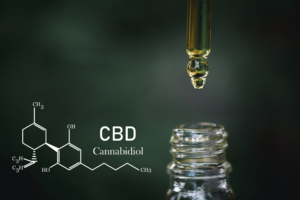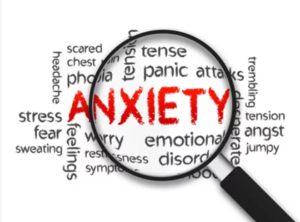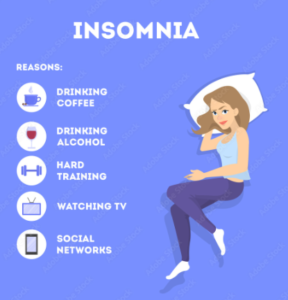Taking CBD for pain is the #1 topic for research on the internet. It is estimated that between 66%-75% of people using CBD have been reported to use it for some sort of pain response and I believe this number to be even higher! With so many people looking for relief from chronic pain, and concerns about addiction to opioids and other pain-killers, it’s no wonder that searching for the non-traditional route has become more popular. And let me assure you, that if you are knocking on the door of the CBD world and seeking for her resources, then you are squarely outside the corridors of traditional medicine. And yes, CBD is a female since it is only harvested from the female species of hemp plant. This should not come as a surprise to those of us in the real world, as CBD is a serious multi-talented little cannabinoid (compound found in the hemp plant) and a very effective multi-tasker. But I digress, so let’s move on the subject at hand.
All of the claims I make in this article are backed by research and study with a smattering of real-life observations. I take my job seriously as a pharmacist and have shied away from the bombastic observations of many manufacturers that want to make a splash in the supplement market. I promise to continue making clinically based, conservative observations and not start drinking the Kool-Aid of this hyper-competitive make-any-promise-to-get-a-sell industry.
My hope is that you will see what a multi-faceted phyto-cannabinoid we have, along with her brothers and sisters (there are over 100 different kinds of CBD in the hemp plant). There are many levers and pulleys that are used when exerting optimal effects for any full or broad-spectrum CBD product. The Endocannabinoid System (ECS) that is affected by these phytocannabinoids (plant-based cannabinoid) is wide ranging and governs our whole body as it strives to keep us in homeostasis. The ECS oversees all the other systems in our body such as the pulmonary, respiratory, endocrine, and so on. So, anything that is in charge of a complex structure such as the human body will be difficult to put in a box, so we have to hold some of the concepts that I am introducing loosely while we assemble all the facts.
Defining Concepts
Alrighty then, let’s start with the easy stuff. What is pain? Seems like a simple question on the surface, doesn’t it? We know what causes it and how it feels but how well do we understand what happens internally? At its most basic explanation, pain is a signal from your nervous system that something is wrong. The two main categories are tissue damage (nociceptive pain) and nerve damage (neuropathic pain). There is a 3rd category called psychogenic pain which somewhat defines itself as pain that is prolonged or exacerbated by such factors as fear, depression, stress, or anxiety. Keep this category in mind because CBD can help with the traditional routes of pain management such as anti-inflammatory effects and working at opioid receptors but can also help with our perception of pain.
Effects of CBD
Studies have shown that CBD is a non-intoxicating phyto-cannabinoid that has neuroprotective effects (protects our nerve cells from harm), inhibits glutamate toxicity (excitatory neurotransmitters that causes cellular damage when activated) and shows antioxidant activity greater than Vitamin C or Vitamin E.
CBD has also been shown in pre-clinical (animal) studies to decrease tumor necrosis factor alpha (TNF-a) which shows promise for inflammatory diseases such as rheumatoid arthritis (TNF-a is a substance in your body that increases inflammation). More specifically TNF-a is a type of cytokine released by the cells in response to an injury. Cytokines act like beacons in our body and often act like first responders at the scene of an accident. They send signals to the immune system on where to send its resources. CBD plays a role in regulating this protein but does not shut it off because cytokines are not all bad and do play an important role in protecting our body against foreign invaders.
CBD and the Immune System
This is a great point to tout our ECS and CBD. Our ECS is intimately involved in all aspects of our immune system. It helps us recognize danger, like the cytokines mentioned above, but also helps shut things down once the infection has been neutralized. Too much of an immune reaction can cause just as much harm as an infection so the body uses the ECS to keep our body in a state of homeostasis (which is a fancy word meaning balance). The cool thing about CBD is its main effect is to encourage our ECS to act more efficiently and effectively. But as you can see from my previous paragraph, CBD does so much more (and I’m not even close to mentioning all that it can do in our body).
Reducing inflammation by affecting our immune system is one of the unique mechanisms about CBD. It has been found to be 5-10x stronger than ibuprofen without the side effects of ulcers and bleeding in our stomach. This is an important distinction because toxicity for ibuprofen can occur even at the lowest over-the-counter recommended doses (200mg every 6 hours) yet CBD has been found to have little to no side effects even at 10x its original dosage. I feel like this fact gets lost on the governmental regulators in our country. Yes CBD is in the cannabis family but it is quite different from marijuana and infinitely safer than many over the counter medications.
Improving on the inflammatory message that CBD provides, studies have found that it is able to promote the activation of the adenosine receptor A2A. This receptor is pretty cool and is one of the main targets for caffeine. A2A has been studied for its promise in control of cancer progression and in fighting against neurodegenerative diseases like Parkinson’s. It also plays an important role in your heart rhythm, blood circulation, pain regulation and sleep. You can see some of the cross overs with the positive effects from caffeine. CBD is like a swiss army knife in our biological world!
Pain
Pain is largely produced by agents in our body that increase swelling and inflammation. You might ask, especially when suffering an injury, why does my body do this? It is actually a protective mechanism to isolate the injury and bring in the full force of the immune system so it can start healing. You are familiar with proinflammatory proteins such as the cytokines, but we also see this with histamines (which has led to the creation of antihistamines such as Claritin or Allegra for allergy-related inflammation). If the condition that has caused the damage is not resolved, then the process progresses towards chronic inflammation which is often associated with the over-expression of inflammatory proteins such as cytokines (there are others as well). This is similar to what you see with neuropathic pain which can be spontaneous and without a particular stimulus.
So why the focus on the immune system and this complex physiology? Well, first off, I am fascinated by the way that our body works, and I hope you can catch some of my enthusiasm too!
But more importantly, preclinical studies have shown that cannabinoid receptors such as CB1 and CB2 block pain in various acute and chronic pain models. CBD not only helps our immune system work better, it also helps to regulate how it heals our wounds! CBD also has been shown to alter how we feel pain and perceive it, which brings us back to an earlier point I made. Sometimes it is our perception of the pain that gets us off track. Whether it is legitimate anxiety or anticipation or many other psychological reasons, CBD can help with that because it doesn’t work at the site of the injury but throughout our whole body. Don’t forget that there are ECS receptors in every organ in our body as well as our brain! CB2 receptors have been found to increase the amount of dopamine (chemical messenger that plays a critical role in feeling pleasure and emotions) in our mid-brain areas leading to greater pain control. Dopamine is a fascinating little neurotransmitter and has many other beneficial effects in addition to pain control. So, it not only helps to reduce our pain but also plays a vital role in balancing our physical and mental well-being.
Just as you think you can put CBD into a box, I keep bringing out more complexities! I know I am asking you to stretch your brain, but I promise that it’s worth it! To review, CB1 receptors are found predominantly in the brain and spinal cord but also assist certain aspects of the immune system. CB2 receptors are more predominant in your peripheral nervous system, immune system, and body organs. The actions of these receptors have an effect of protecting our neurons (nerves) from pain, decreasing inflammatory mediators (proteins released by the body that increase pain) and improving the response of peripheral nerve injury.
When considering how our own cannabinoid receptors reduce pain, try and think of it this way. CBD acts on CB1 and CB2 receptors and modulates our immune response so that our body produces less of the proteins that increase inflammation and increase pain without affecting our ability to handle whatever crisis is going on. It is a fine balance and one that could not be completed by any other system in our body that was not challenged with finding the perfect balance.
CBD and Opioid Receptors
And as I mentioned earlier, CBD and CB receptors are like cross trainers and affect more than just one area. We have seen indirect stimulation of opioid receptors because of their physical proximity to CB1 receptors in the body. The activation of the opioid receptors gives our body another way to reduce the pain we feel and to lessen the psychological impact of the pain as well. Multiple studies have shown that a two-way relationship exists between these receptors pertaining to the rewarding behavior and pain relief felt by activation of our own internal opioids (yes, our body makes its own opioids!). We also know that one of the predominant side effects of opioids such as Norco and Oxycontin is the suppression of our breathing, which does not occur with CBD.
And finally, yes, there is a light at the end of this CBD tunnel! Let’s talk about the effect of CBD on TRPV1 receptors, or by the more familiar name of capsaicin receptors. Some of you that are old school may have tried capsaicin cream for any kind of topical pain, especially arthritis. The success of capsaicin is directly related to its ability to depress the expression of these TRPV1 receptors. Actually, capsaicin initially activates these receptors which is why you feel an intense burning, but then it goes away as the drug numbs these receptors which reduces the pain you are feeling. This is particularly useful when dealing with neuropathic pain which can explain why CBD can work well in these kinds of situations. In fact, studies have shown that when you reduce CBD’s ability to affect these TRPV1 receptors you see less relief of peripheral pain. CBD has been found to have a similar effect on TRPV1 receptors as capsaicin, without the initial burning sensation (thankfully!).
Dosing with CBD for Pain
When talking about dosing with CBD, the amount available to the body (or bioavailability) is important but is only one of the factors we consider. The majority of CBD is metabolized and inactivated by the liver. The edible formulations absorb more slowly but you do not get as much CBD. The effects will be felt longer but the relief may not be as great for someone with high amounts of pain.
Formulations such as the tinctures, inhalation solutions, nanoparticles and patches will all have faster absorption, but the effects do not last as long. These formulations give you more of the CBD in your body before the liver can do its thing. This results in more of the medication delivered to your body which gives a greater effect but less duration. Someone with acute pain like headaches or migraines may benefit from these formulations. And people with chronic pain like arthritis might do better with the oral varieties.
And one other thing to keep in mind is that more CBD does not always equal greater effect. There is a point where too much CBD results in a worsening of symptoms and lower efficacy. This maximum dosage is going to be unique to each person, but I generally do not see much advantage to over 200mg per day of CBD. Most people settle in-between 50-100mg per day, divided up two or three times throughout the day.
A good starting dose is 0.25mg-0.5mg CBD per kg of bodyweight. Like all other new starters, “low and slow is the way to go” as you build up to a normal dose (1-2mg CBD/kg). I recommend dosing in the morning and afternoon so peak effects are felt during the daytime while awake. I personally have found mixing the formulations does help, so I like to start with a tincture in the morning and an edible in the afternoon. I do recommend taking with food and monitoring for an upset stomach and vivid dreams. Most people will not have any side effects, but I have found these to be the most common.
Conclusion
Summarizing what we have learned shows that CBD exerts its effects by more than just one mechanism. I believe that the most potent effects are seen in the immune system but are also amplified by the additional receptors activated in the body by CBD. One of the neatest things about CBD is that you just can’t put it into a box. Yes, it does affect our CB1 and CB2 receptors indirectly but also has direct effects on many other neurotransmitters such as dopamine and serotonin. And you add other areas of activation such as TRPV1 receptors and opioid receptors and you can start to see why CBD and pain are so closely related.
I like the multi-faceted approach that CBD uses in our body since the symptoms that we try to medicate such as chronic pain are complex in nature. The important thing to remember is give this kind of therapy time. CBD doesn’t work right away in most cases. Sometimes people don’t feel anything right away and are ready to write it off as another fad but I would encourage them otherwise! Since CBD treats a system, the effects take longer to kick in. This isn’t like taking a Tylenol or a Vicodin where you feel something almost right away.
The treatment of pain can be a complicated topic. I advise my patients that CBD is not a magic bullet but can be a very potent weapon in your arsenal. Some people I know have been able to wean off their high doses of opioids by using CBD, while others feel a minimal effect. I hope more of the former and less of the latter for you in your quest for healing and relief from your pain.
The views in this document are expressly the opinion of Sean Gale RPh, and are not meant to treat, diagnose, prevent or cure any disease states or medical conditions. Please consult your physician before beginning any CBD therapy. These statements have not been evaluated or approved by the FDA. Buyer is to consume CBD at their own risk. I may be reached for further questions at seangalerph@gmail.com.




